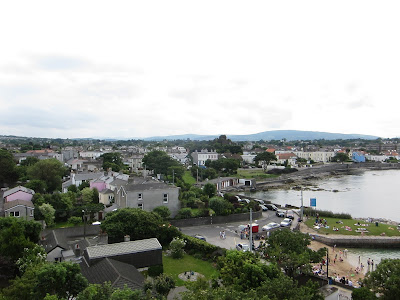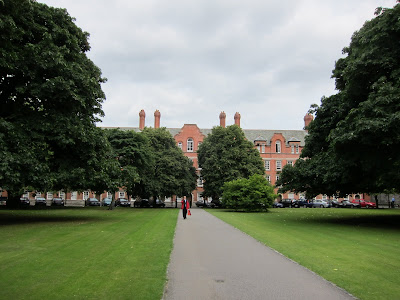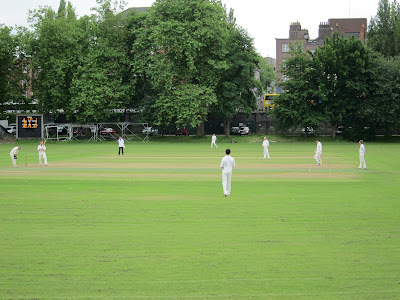This post is very long, but I felt it necessary to tell the full story.
There's only one picture for this post:

I came across this flyer on the street soon after I landed in Dublin, and I was simply dumbfounded. The event was sponsored by the Ireland Palestine Solidarity Campaign and the Irish Anti-War Movement, in response to the recent events surrounding the flotilla. It was going to be held in the evening at one of the hotels on O'Connell Street.
I didn't anticipate that this blog would be at all political, but for this post it will be. As soon as I saw this flyer, I knew I had to go and speak up on behalf of Israel. Whether or not one agrees with the way in which Israel carried out the operation, the fact remains that Israel was slammed in the media in an unfair way-- particularly in Ireland. I knew that were I to go to this debate, that I would be stepping into an utterly biased environment in which the complexities and nuances of the conflict would not be considered.
I contacted one of my Birthright group leaders to see if she could provide more information about what actually happened. She put me in touch with a gentleman who works at the David Project, a non-profit organization that educates students about how to be strong advocates for Israel. During my birthright trip, someone from the David Project gave a presentation on the biases against Israel in the media, and it was by far one of the best parts of the trip-- it was objective, presented the facts, and really explored the complexities of the conflict. The lecture stressed the ways in which Israel is often put in a lose-lose situation, and how easy it is for it to be portrayed poorly in the media when the news ignores the big picture. Example:
Does Israel stop Palestinian ambulances carrying sick and dying people to the hospital at checkpoints?
Answer: Yes
Given just this information, of course someone with Western democratic ideals and a strong belief in fundamental human rights would be horrified and disgusted by this information and condemn Israel.
The problem is that the larger context is often ignored. The reason why Israel stops ambulances at checkpoints is that in the past ambulances have been used to smuggle weapons, bombs, and suicide-bombers into Israel. In order to protect its civilian population, Israel has no choice but to stop ambulances carrying sick and dying people-- a horrible, unfortunate lose-lose situation that Israel has been forced into.
This is the context from which the flotilla should be considered, and were it considered as such, a boycott on Israel as a punishment for its actions would reveal itself as an unjustified and irrational measure. This is the context from which I approached the debate.
I spent the week reading about the situation and its larger context so that I would be as prepared as possible. By the time the debate rolled around, I felt prepared enough to at least propose the need to consider the situation more objectively, instead of just throwing all the blame on Israel.
I walked in and found myself in a very hostile environment. There was anywhere from 50-100 people in the room, and everyone of them seemed fervently against Israel. Since the premise of the meeting was a discussion of whether or not Ireland should boycott Israel, there was no question as to whether Israel was utterly at fault.
One of the panelists called Israel a "racist, dysfunctional, apartheid state." Everyone clapped and cheered.
After all the panelists spoke, it was time for Q and A. I raised my hand for a very long time, and I was consistently ignored- the moderator seemed to be only calling on people he knew. Finally, I was given a chance to speak. As soon as I started speaking, I could hear booing from the crowd. One guy even cursed me out. Needless to say, I felt very uncomfortable.
In my speech, I tried to emphasize three major points:
1. There has been a lot of discussion in the debate about Israel's actions, but no one has mentioned anything about why Israel went into Gaza (the answer being that Hamas, a terrorist organization whose charter calls for the destruction of the Jewish State, was smuggling weapons into Gaza and then used those weapons against Israel). No one has mentioned the thousands upon thousands of qassam rockets that were fired onto Israeli cities--onto innocent Isareli civilians-- during the years leading up to the invasion of Gaza. No one has mentioned anything about the suicide bombs set-off in Israeli cafes and on buses.
2. Israel built a barrier- it's not a wall because 97% of it is actually a fence (everyone there called it an "apartheid wall"). A part of the barrier is a wall, and yes, that section of the wall makes the Berlin Wall look like a joke (it's much taller and longer than the Berlin Wall). The only reason why Israel built the barrier was to prevent suicide-bombers from getting into Israel, and so far, it has worked. It is an extremely unfortunate solution, but at the moment, an effective one.
3. Israel is the only liberal democracy in the Middle East. It is the only state in the Middle East where people of all religions, races, genders, ethnicities, etc. are granted equal rights. If you treasure your democratic ideals and belief in human rights, you should be debating how to support Israel, not how to boycott it.
After I finished, everyone was pretty riled up. There was a part of me that was worried someone might get physically violent-- I even passed a note to Leila, who was there to support me, saying "pretend like you don't know me, just in case." I wasn't being dramatic-- the room was that tense.
After the debate ended, a ton of people swarmed around me to talk to me. This is when I realized that no one was going to hurt me- they were just really passionate about their views, just as I am passionate about sharing views that are vastly different. Of course, they wanted to argue some more. In reality, they had no interest in what I was saying, in having a meaningful dialogue, they just wanted to "convert" me to think exactly what they think, and I received a couple of sympathetic, pitying glances, as if to say "you poor lost lamb." One woman even said straight to my face "I think you're brainwashed." I said to her "that's okay, I think the same thing about you," with a chuckle. Looking back, it was actually all very cordial.
In fact, putting aside the need to continue arguing, many, many people also came up to me to congratulate me on speaking. They said I was very brave to do what I did, that it must have taken a lot of courage to speak up in that kind of environment. I really appreciated them saying that, and felt good about it. Several people also apologized on behalf of the man who cursed at me, although an apology from him would have been better.
We continued talking for the next two hours or so. People just could not fathom that I was rational, could speak intelligently, seemed like a nice person, and that I could be defending Israel. They must have been under the impression that people who support Israel are fanatical, unthinking brutes.
I don't think I changed anyone's mind. Often times when I spoke, eyes would glaze over, and my words would go in one ear and out the other. But if all I accomplished was to make it known that there are young people who are passionate about defending Israel, then that alone was worth the experience.
Some of the people were very well intentioned, coming from a purely human rights perspective. Others, I'm afraid, were just blatantly anti-Semitic: when one man started hinting at Holocaust denial, I decided there was no point in me continuing to argue, and that it was time to go.
So what did I learn? Well, for one I learned that there's an intense bias against Israel in Ireland. I have some theories as to why this might be so, but I won't go into them now.
Prior to the debate, I was interested in this idea of theatre as a means of conflict resolution. Now I'm even more interested in the possibility of using theatre as a tool to better understand different cultures and people and thereby help diffuse cultural conflicts. Ireland is a good model for how a difficult, violent conflict can be resolved, and I'm hoping there are more answers to be found here along those lines. Also, the way in which a culture collectively perceives events and constructs narratives based on cultural memory I find particularly fascinating, and I would like to pursue this inquiry further.
Please, if you disagree with something I have said in this post, or if there's something you would like to add or qualify, please don't hesitate to comment. It's important we keep the conversation going, even if it is difficult to do so. As a wise man once said, "an imperfect voice is better than perfect silence."
























































